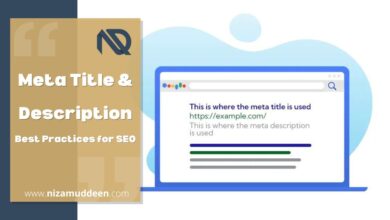Ever feel like your website gets lost in the online crowd or stucked on page second?
It’s tough to stand out on top when everyone’s competing for attention.
That’s where SEO competitor analysis becomes your trusted guide. It’s like getting a sneak peek at your competitors’ strategies to see how they’re succeeding online.
SEO competitor analysis is like peeking over the fence to see what your neighbors are doing in their garden. It’s all about figuring out what other websites are doing to get noticed by search engines like Google.
You can learn a lot about what works and what doesn’t by taking a closer look at their tricks and tactics.
Let’s say you have a small bakery in town, but you’ve noticed that another bakery seems to get a lot more customers.
By doing some snooping (the legal kind!), you find out that they use certain words like “freshly baked bread” and “artisan pastries” on their website, which helps them show up higher on Google.
They also have lots of other websites linking to theirs, like food blogs.
Armed with this info, you decide to spruce up your own website with similar words and reach out to local food bloggers for some online love.
Before you know it, your bakery is popping up higher in search results, bringing more hungry customers through your door.
Learn learn more about this practice in depth.
What Is SEO Competitor Analysis?
SEO competitor analysis is like peeking at what your rivals are doing to rank high on Google. It’s a way for businesses to spy (legally!) on their competitors’ online strategies to see what’s working and what’s not.
Instead of just glancing at competitors’ websites, SEO competitor analysis dives deep into how they’re using tricks to get noticed by Google.
It’s not random snooping; it’s a structured investigation. We look at everything from their website design to the words they use and even who’s linking to them.
We’re not just trying to copy them; we’re looking for their weak spots too. By spotting where they’re doing well and where they’re falling short, we can find ways to do even better.
We pay attention to different things, like:
- How their website looks, what they’re talking about, and how helpful their content is.
- The words they use to attract visitors, whether they’re using common terms or more specific ones.
- Who’s linking to them and how many, because that can boost their visibility.
- What kind of stuff they’re posting and how often.
- How fast their site loads, whether it works well on phones, and if their website addresses make sense.
Why Is an SEO Competitor Analysis Important?
SEO competitor analysis provides businesses with valuable insights that can inform strategic decision-making. You can adapt your own strategies accordingly by understanding what is working (and what isn’t) for competitors.
Armed with insights gleaned from competitor analysis, businesses can identify opportunities to differentiate themselves in the marketplace.
Whether it’s by targeting underserved keywords, improving website usability, or enhancing content quality, competitor analysis can help businesses gain a competitive edge.
SEO competitor analysis is not a one-time activity but rather an ongoing process. You can stay agile and adapt your own strategies to remain competitive in an ever-changing landscape by continuously monitoring competitors’ strategies and performance.
How to Run an SEO Competitive Analysis?
Imagine you’re a detective, but instead of solving crimes, you’re solving the mystery of how your competitors are winning online. That’s what running an SEO competitive analysis is like – it’s about finding out what makes your rivals successful so you can make your own website even better.
Whether you’re a marketing pro or just getting started with SEO, I am going to guide with everything you need to figure out what your competitors are up to and how you can beat them at their own game.
Identifying Competitors:
Identifying competitors is the first step in SEO competitor analysis. It involves segmenting competitors based on various criteria such as industry niche, geographic location, or target audience.
Businesses can use keyword research tools and competitive analysis tools to identify their main SEO competitors.
For example, they can input relevant keywords into tools like SEMrush or Ahrefs to see which websites are ranking highly for those keywords.
Businesses can better assess the competitive landscape and tailor their SEO strategies accordingly by understanding who their main competitors are.
Keyword Analysis:
Keyword analysis is a critical aspect of SEO competitor analysis. It involves analyzing the keywords that competitors are targeting to understand their SEO strategies better.
Techniques for keyword analysis include assessing keyword difficulty, identifying long-tail keyword opportunities, and conducting SERP analysis to understand competitor positioning and user intent.
Businesses can identify new keyword opportunities and refine their own keyword targeting to improve their search engine rankings by analyzing competitors’ keyword strategies.
Site Strengths and Weaknesses:
Analyzing a competitor’s website strengths and weaknesses is essential for understanding their overall SEO performance.
This analysis may include evaluating user experience, conducting content gap analysis, assessing performance metrics, evaluating authority, and monitoring changes in keyword rankings.
Businesses can identify opportunities to improve their own website and SEO strategy by identifying areas where competitors excel and areas where they may be lacking.
Page Optimization:
Page optimization focuses on optimizing individual pages of a website to improve search engine visibility and user experience.
Strategies for page optimization include content optimization techniques, mobile optimization best practices. And optimizing elements such as title tags, meta descriptions, URL structure, and content alignment with target keywords.
Businesses can improve their search engine rankings and attract more organic traffic to their website by optimizing individual pages.
Backlink Analysis:
Backlink analysis involves analyzing the backlink profiles of competitors to understand their link building strategies.
This analysis may include assessing anchor text distribution, investigating competitor link building tactics, analyzing social signals, and comparing the quality of backlinks.
Businesses can identify opportunities to improve their own backlink profile and enhance their search engine rankings by understanding where competitors are acquiring backlinks and the quality of those backlinks.
Featured Snippets:
Featured snippets are snippets of information displayed at the top of search engine result pages (SERPs) that aim to answer user queries directly.
Optimizing content for featured snippets can help improve visibility and drive more organic traffic to a website.
Strategies for capturing featured snippets include providing concise answers to common questions, structuring content in a format that is easy for search engines to understand, and using schema markup to enhance content visibility.
Businesses can increase their chances of appearing in position zero on SERPs and attract more organic traffic by optimizing content for featured snippets.
SEO Competitor Analysis Report
Creating a comprehensive SEO competitor analysis report is like assembling a roadmap to navigate the ever-changing landscape of online visibility. This report could serves as a valuable resource for those looking to understand their competitive position in search engine rankings and identify opportunities for improvement.
Let me point out one effective tool for compiling and organizing the findings of an SEO competitor analysis is a Google Sheets.
You may know this versatile platform allows users to gather data, track metrics, and visualize insights in a structured and accessible format.
Actionable Recommendations:
After conducting a thorough SEO competitor analysis, now the next job is the translation of insights gained into actionable recommendations.
This involves identifying specific areas where improvements can be made based on the findings of the analysis.
These recommendations should be practical, achievable, and tailored to the unique needs and goals of the business.
For Example:
If the analysis indicate that competitors are ranking higher for certain potential keywords, a recommendation might be to optimize website content to target those keywords more effectively.
Similarly, if weaknesses are identified in the website’s backlink profile, a recommendation could be to develop a targeted link building strategy to improve authority and credibility.
The key is to provide actionable steps that can be implemented to enhance the website’s SEO performance and achieve better results in search engine rankings.
Optimize Website Content for Target Keywords
- Identify competitor keywords.
- Audit existing content.
- Rewrite content with target keywords.
- Create new keyword-focused content.
- Add internal links for structure.
- Monitor and adjust content performance.
Develop a Targeted Link Building Strateg
- Analyze competitor backlinks.
- Use tools to find relevant websites.
- Develop personalized outreach strategy.
- Create link-worthy content.
- Write guest posts with backlinks.
- Cultivate relationships with influencers.
- Track link building success and adjust strategy.
Executive Summary:
The executive summary serves as a concise overview of the key findings and recommendations from the SEO competitor analysis. It’s designed for stakeholders or decision-makers (if you are providing SEO services) who may not have the time to review the full report in detail but still need to understand the main takeaways.
The executive summary should highlight the most important insights gleaned from the analysis, such as key competitors, areas of strength and weakness, opportunities for improvement.
It should also outline the recommended strategies for addressing these findings and improving SEO performance.
Key Findings could include:
- Outline the main competitors identified and their strengths and weaknesses.
- Highlight competitors’ notable strengths and areas where they could improve.
- Identify specific chances for enhancing SEO performance based on competitors’ weaknesses or gaps in the market.
- Provide actionable suggestions derived from the analysis to capitalize on opportunities and address weaknesses.
Summary of the Topic
Here are the key points to conclude the topic of creating a timeline and implementation plan for SEO recommendations derived from competitor analysis:
- Set Realistic Deadlines: Establish achievable timelines for implementing SEO recommendations based on factors such as task complexity, resource availability, and budget constraints.
- Consider Resource Availability: Take into account the availability of personnel, budget, and tools when creating the implementation timeline to ensure tasks can be completed efficiently.
- Account for Budget Constraints: Prioritize recommendations based on their potential impact and alignment with available budget resources to ensure effective allocation of funds.
- Prioritize Recommendations: Not all recommendations will have the same level of urgency or impact. Prioritize recommendations based on their potential to address critical weaknesses or capitalize on immediate opportunities for improvement.
- Outline Specific Tasks and Responsibilities: Clearly define tasks and assign responsibilities to team members responsible for their completion to ensure accountability and efficiency in implementation.
- Set Milestones and Timelines: Establish milestones and timelines for each recommendation, indicating key checkpoints and deadlines for task completion to track progress effectively.
- Facilitate Communication and Collaboration: Foster open communication and collaboration among team members and stakeholders to ensure everyone is aligned on objectives, timelines, and responsibilities.
By following these key points and creating a clear timeline and implementation plan for SEO recommendations derived from competitor analysis, businesses can ensure that the recommendations are executed efficiently and effectively. This, in turn, leads to tangible improvements in SEO performance over time and helps achieve the desired business outcomes, such as increased website visibility, traffic, and conversions.



